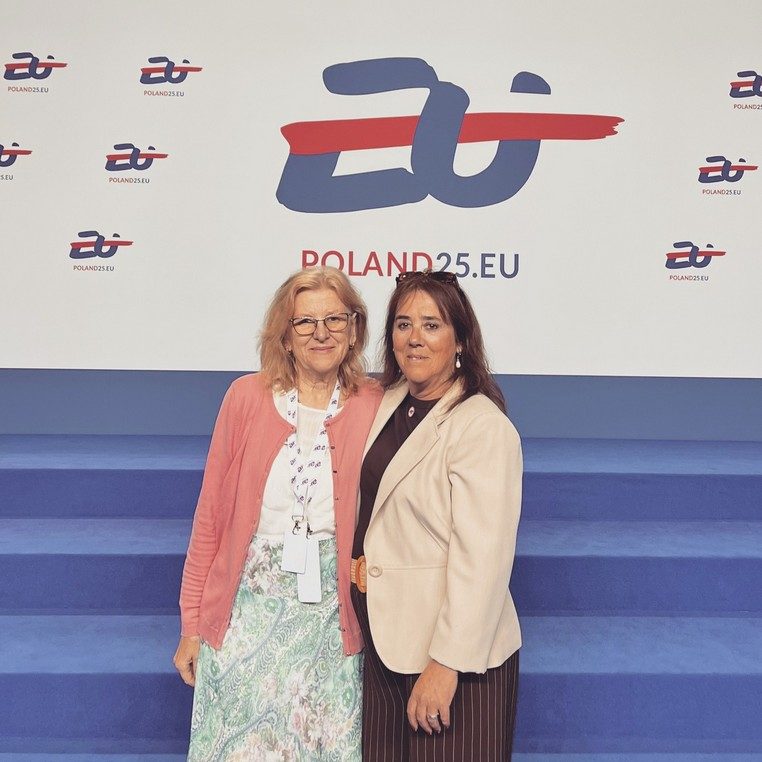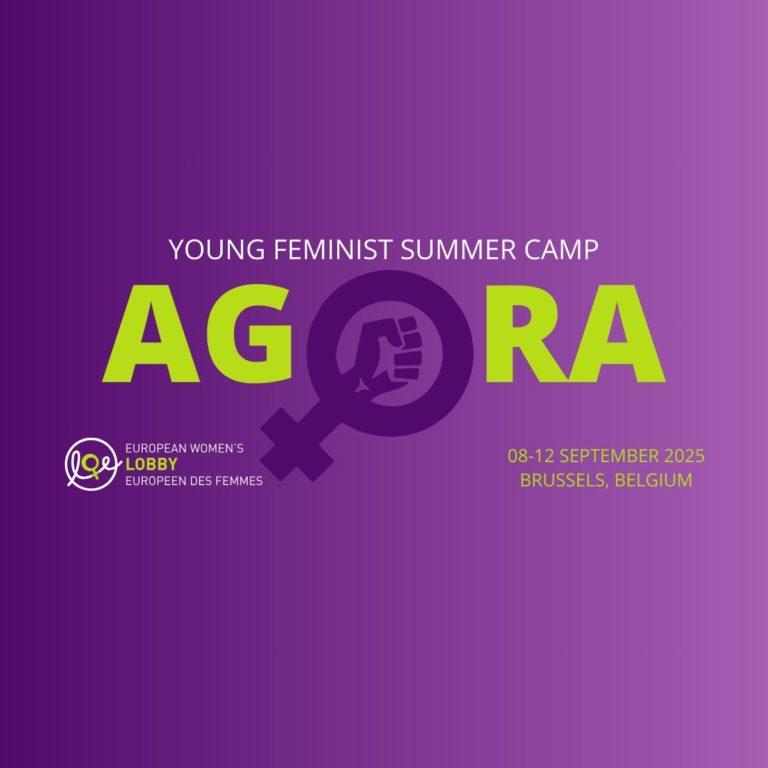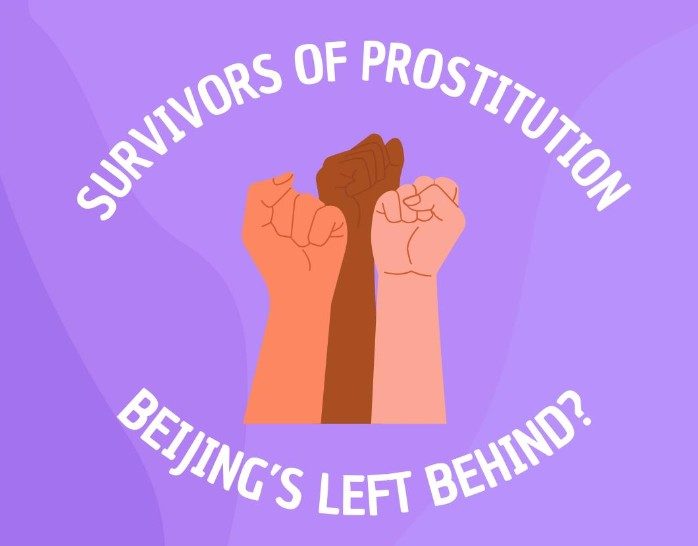[Brussels 11 October 2017] Today, the European Institute for Gender Equality launched the 2017 edition of its Gender Equality Index (GEI). This valuable statistical instrument measures progress on gender equality in Europe and provides a tool to help women’s rights activists to identify gender gaps that require more robust measures.
Progress?
The European Women’s Lobby (EWL), the largest coalition for women’s rights in Europe, welcomes the overall progress evidenced by the latest edition of the GEI but is dismayed by the very slow pace of change.
“Women are not willing to wait 100 years for equality”, says Joanna Maycock, Secretary General of the European Women’s Lobby. “It is high time for the EU to act decisively to accelerate the pace of change, to show that we are serious about the rights of all citizens. The EU needs to deliver on gender equality, which the GEI once again demonstrates is directly linked with more happy, open and inclusive societies. The EWL will continue to use its collective voice to resist, collaborate and demand equality for every last woman.”
It is frustrating to see how progress has practically ground to a halt in the past decade. This year’s index score is just 66.2 (1) an increase of just 4 points in the last 10 years. Though we would like to believe otherwise, the data show that women are still very much second-class citizens in the EU. While most moved in the right direction this past year, some EU Member States have actually gone backwards and none has reached full gender equality. At this rate of progress, equality will not be seen in our or in the next generations’ lifetimes. This is simply not acceptable.
The most gender equal countries in Europe continue to be Sweden, Denmark and Finland, with scores of around 80/100; Greece, Hungary and Slovakia on the other hand are languishing at the bottom of the index at around half way to equality.
Looking at the results in the different domains (2), we see most progress in the sphere of power, with greater numbers of women moving into decision-making positions across political, economic and social spheres. The relatively higher pace of progress is in part due to a very low starting point and this area still has the lowest score of all domains.
Men continue to dominate leadership roles at powerful central banks, finance ministries and in the top positions of the largest companies, where only 4% of top positions are held by women in the EU! Where there has been progress, for example, in corporate governance, this is in large part due to pressure from women’s organisations and the introduction of specific legislative measures such as gender quotas.
Gender Time Gap
Significant gender gaps in engagement in housework exist across all social groups, with only a third of men engaging daily in cooking and housework. For progress to happen, women need more time to be able to invest in paid work and political participation, but the burden of unpaid and low paid care work continues to rest on women’s shoulders – especially on migrant women. As the GEI shows, this Gender Time Gap is deeply rooted and is getting worse.
Intersecting inequalities
EWL is pleased to see the GEI bringing insights into intersecting inequalities, for specific groups of people based on age, (dis)ability, migrant background, education and family composition, revealing the extent to which these additional factors have a significant impact on levels of poverty, care responsibilities, employment and health.
Inequalities prevail
In the areas of work and money, the effects of austerity continue to have a detrimental impact on women’s lives. Persistent gender gaps in income and earnings undermine women’s economic independence. Women are much more likely to face discrimination at work and to take jobs that are low paid and low status. Throughout Europe, women continue to experience lower employment rates, with higher levels of (involuntary) part-time work. Women are much more likely to live in poverty, even if they are in paid work.
The way forward
Europe must move away from austerity towards a feminist economic model that is based on valuing care, investing in social rights and ensuring public tax and budget systems support equality. This means for example, investing in care infrastructure and introducing measures that support the redistribution of domestic care responsibilities between women and men. We also need awareness campaigns to bring a mind-set change to shift societal attitudes and stereotypes: we have a shared economic and societal responsibility.
The EWL and members welcome recent efforts made by the European Commission to restore work-life balance as part of the European Pillar of Social Rights (3) to rebalance care responsibilities which are disproportionately placed on women’s shoulders. We will also continue to call for the extension of maternity rights to ensure that all women in Europe have equal rights and freedom from discrimination with regards to pregnancy and child birth.
Notes to editors:
About the Gender Equality Index
- The Gender Equality Index measures gender gaps between women and men. It considers gaps that are to the detriment of either women or men as being equally problematic. As the Gender Equality Index is based on a vision of the European Union whereby development, growth and cohesion for all individuals is a main principle, tackling gender gaps is not enough when it means that both women and men fare equally badly (EIGE, 2015a). The Index also takes into account the country context and the different levels of achievement of Member States in various areas. A high overall score reflects both small (or absent) gender gaps and a good situation for all (e.g. high involvement of both women and men in employment).
- The third edition of the Gender Equality Index monitors developments in gender equality over 10 years, from 2005 to 2015.
- Several aspects of the methodology of the Gender Equality Index were updated in 2017, which means that the scores in the third edition are not comparable with the results of previous editions. In order to rectify this, all scores for the previous years were recalculated using the new methodology.
- Due to very strict quality and comparability criteria, only data from large EU-wide surveys are used for the Index, and this includes data collected and surveys coordinated by Eurostat and surveys by the European Foundation for the Improvement of Living and Working Conditions (Eurofound) as well as data collected by EIGE Gender Statistics Database, Women and Men in Decision-Making.
About the European Women’s Lobby
The European Women’s Lobby (EWL) is the largest umbrella of women’s associations in the European Union (EU), working to promote women’s rights and equality between women and men. EWL membership extends to organisations in all 28 EU member states and the three candidate countries, as well as to 20 European-wide bodies, representing a total of more than 2000 organisations. For a feminist Europe. www.womenlobby.org @EuropeanWomen
For more information, interviews, background or visual materials, please contact: Elvira Buijink, EWL Communication and Media Officer buijink@womenlobby.org
Footnotes
1 Several aspects of the methodology of the Gender Equality Index were updated in 2017, which means that the scores in the third edition are not comparable with the results of previous editions. In order to rectify this, all scores for the previous years were recalculated using the new methodology.
2 The Index measures gender gaps in different areas: work, money, knowledge, time, power and health.
3 https://womenlobby.org/The-European-Women-s-Lobby-welcomes-the-Commission-s-Work-Life-Balance-but



